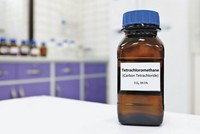Advertisement
Grab your lab coat. Let's get started
Welcome!
Welcome!
Create an account below to get 6 C&EN articles per month, receive newsletters and more - all free.
It seems this is your first time logging in online. Please enter the following information to continue.
As an ACS member you automatically get access to this site. All we need is few more details to create your reading experience.
Not you? Sign in with a different account.
Not you? Sign in with a different account.
ERROR 1
ERROR 1
ERROR 2
ERROR 2
ERROR 2
ERROR 2
ERROR 2
Password and Confirm password must match.
If you have an ACS member number, please enter it here so we can link this account to your membership. (optional)
ERROR 2
ACS values your privacy. By submitting your information, you are gaining access to C&EN and subscribing to our weekly newsletter. We use the information you provide to make your reading experience better, and we will never sell your data to third party members.
Chemical Regulation
1-Bromopropane up next on EPA’s chopping block
Under TSCA, the agency proposes a ban on most uses of the cleaning and degreasing agent
by Leigh Krietsch Boerner
August 6, 2024

In the latest action on a chemical targeted under the Toxic Substances Control Act (TSCA), the US Environmental Protection Agency has proposed new rules on 1-bromopropane (1-BP).
If finalized, the rules would prohibit all but one consumer use of the solvent and degreaser and ban some workplace uses. For most of the industrial and commercial uses that would not be banned, the EPA is proposing additional worker protections.
“The science shows that 1-BP can cause cancer and other serious health problems, and today’s action is an important step to use the power of our nation’s chemical safety law to finally protect people from this dangerous chemical and prevent cancer-causing exposure,” Michal Freedhoff, assistant administrator for the EPA’s Office of Chemical Safety and Pollution Prevention, says in a statement. “Our proposal would end all unsafe consumer exposures from this chemical and put strict protections in place for workers to ensure critical uses can continue safely.”
In its 2022 final risk determination of 1-bromopropane, the EPA concluded that the chemical poses unreasonable risks to human health under current use. The risks include cancer; liver, kidney, and nervous system damage; and toxicity to reproductive and developmental systems.
1-Bromopropane is used in multiple industrial and commercial applications, including spot cleaners, degreasers, spray adhesives, insulation, and dry cleaning. The EPA’s proposed rule would ban all consumer uses except insulation since the final determination did not find this use to be an unreasonable risk.
The proposed rule would also ban some industrial and commercial applications, including as engine degreasers, antiadhesive agents, and refrigerants. For applications that would still be allowed, the EPA would require nonfederal workplaces to start using chemical resistance gloves within 6 months of the rule’s passage and to implement a workplace chemical protection program within 1 year. Federal agencies would get 3 years.
1-Bromopropane is the seventh of the first 10 high-priority chemicals for which the EPA proposed rules after Congress amended TSCA in 2016. The agency has since more than tripled the length of the high-priority list.
The EPA is about 3 years behind on issuing these regulations but is catching up. So far in 2024, the agency has finalized bans on asbestos and methylene chloride and has proposed limits on the use of N-methylpyrrolidone. Of the initial 10 compounds, 3 remain without proposed rules: 1,4-dioxane, cyclic aliphatic bromide cluster, and pigment violet 29. The EPA finished risk assessments for these compounds in 2020 and 2021.
If passed, the rules on 1-BP would take effect 6 months after the final rule is published. The EPA allows the public to submit comments for 45 days after the proposed rule is published in the Federal Register.





Join the conversation
Contact the reporter
Submit a Letter to the Editor for publication
Engage with us on Twitter